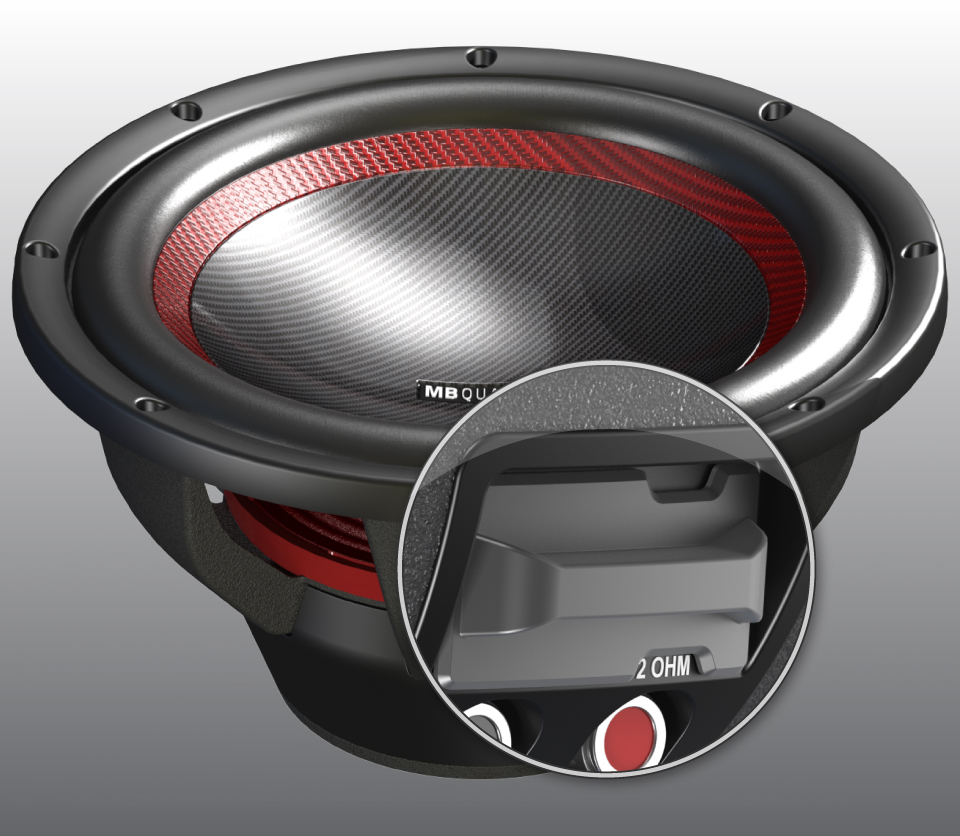
Picking the perfect subwoofer for your system is as hard as picking the perfect car. It’s a delicate balance of wants, needs and performance, and one that is best executed with the help of an experienced salesperson or installer. Let’s take a look at the nitty gritty of what makes a subwoofer tick.
Like a car, a subwoofer needs a chassis. These can be made of stamped steel, or on higher-priced models, cast aluminum. They are typically powder coated to provide a tough durable finish. And just as with a car, the stronger and stiffer the chassis (also called a basket) is, the better off you are. Some subwoofers have very heavy magnets, so a strong chassis that is able to withstand vibrations and stresses imposed as you drive down the street is critical.
Attached to the base of the chassis is the motor. Yes, we call the magnet and associated parts the motor. It is half of what makes the speaker move. There are three parts to the motor assembly: The magnet, the top plate and the T-yoke. The top plate is a simple mild steel disc that sits on top of the magnet and focuses the magnetic energy on the voice coil. The magnet is of course the source of the magnetic field. The T-yoke focuses the magnetic field from the bottom of the magnet to the inside of the voice coil. The motor also needs to be able to help dissipate heat built up in the voice coil, so its design is critical.
The cone assembly is comprised of four components: The cone itself, the surround, the spider at the base of the cone and the voice coil assembly. The cone can be made of paper, glass fiber, plastic or composites of many materials. Its job is to be light and rigid, and to transfer the motion generated by the voice coil assembly to the air to make sound. The voice coil assembly features a former made of aluminum or high-temperature plastics like Kapton, and a winding of copper or aluminum wire. The surround is a flexible connection at the top of the cone that allows the cone to move up and down. These are often pleated cloth, foam or rubber. The spider is the key suspension component of the woofer, though it works in conjunction with the surround to control the motion of the cone up and down. It also serves to keep the voice coil centered in the motor assembly so it doesn’t rub.
So, how does a speaker work? When you apply a voltage to the voice coil a magnetic field is created around the windings. This magnetic field either moves the voice coil away from the magnet, or pulls it closer to it. If, as with music, you alternate the polarity of the voltage applied to the voice coil, the speaker cone moves in and out, and voilà, music is made.
A quick side-note – speakers are made with single, double or quadruple voice coil windings. The windings can have different resistances (formally called impedance). No one design is any better than another, as they only exist to provide flexibility to the installer. Different wiring configurations (series or parallel) let the installer wire the subwoofers to make the amp produce different amounts of power.
There are a set of about 20 parameters called Thiele-Small parameters that your installer can use to predict the behaviour of a subwoofer in different enclosures. Learning to balance enclosure designs to meet customer needs and desires is an art, and takes experience. That’s what we pay installers for.
As with all speaker purchases, auditioning them is key. Take your favorite music down to your local car audio specialist shop and start listening. We could talk about subwoofers for this entire issue, but for now, it’s time to see what’s available.
Related Articles
 KW Releases V3s Compatible with BMW Air Suspension and EVs
KW Releases V3s Compatible with BMW Air Suspension and EVs
 Lexus unveils all-electric LFA Concept
Lexus unveils all-electric LFA Concept
 Toyota unwraps GR GT supercar and GR GT3 racer
Toyota unwraps GR GT supercar and GR GT3 racer
 Slammedenuff Daytona Beach Car Show 2025
Slammedenuff Daytona Beach Car Show 2025
 Genesis reveals first Magma production car and supercar concept
Genesis reveals first Magma production car and supercar concept
 Chopping Block: BMW Z4
Chopping Block: BMW Z4




